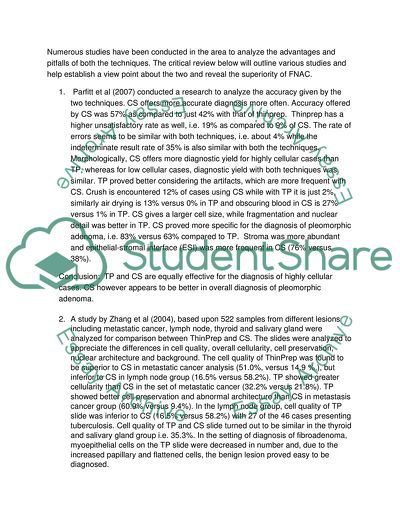Cite this document
(“The value of liquid based cytology compared to conventional smear in Essay”, n.d.)
The value of liquid based cytology compared to conventional smear in Essay. Retrieved from https://studentshare.org/miscellaneous/1564053-the-value-of-liquid-based-cytology-compared-to-conventional-smear-in-fine-neddle-aspiration-of-cytology
The value of liquid based cytology compared to conventional smear in Essay. Retrieved from https://studentshare.org/miscellaneous/1564053-the-value-of-liquid-based-cytology-compared-to-conventional-smear-in-fine-neddle-aspiration-of-cytology
(The Value of Liquid Based Cytology Compared to Conventional Smear in Essay)
The Value of Liquid Based Cytology Compared to Conventional Smear in Essay. https://studentshare.org/miscellaneous/1564053-the-value-of-liquid-based-cytology-compared-to-conventional-smear-in-fine-neddle-aspiration-of-cytology.
The Value of Liquid Based Cytology Compared to Conventional Smear in Essay. https://studentshare.org/miscellaneous/1564053-the-value-of-liquid-based-cytology-compared-to-conventional-smear-in-fine-neddle-aspiration-of-cytology.
“The Value of Liquid Based Cytology Compared to Conventional Smear in Essay”, n.d. https://studentshare.org/miscellaneous/1564053-the-value-of-liquid-based-cytology-compared-to-conventional-smear-in-fine-neddle-aspiration-of-cytology.


